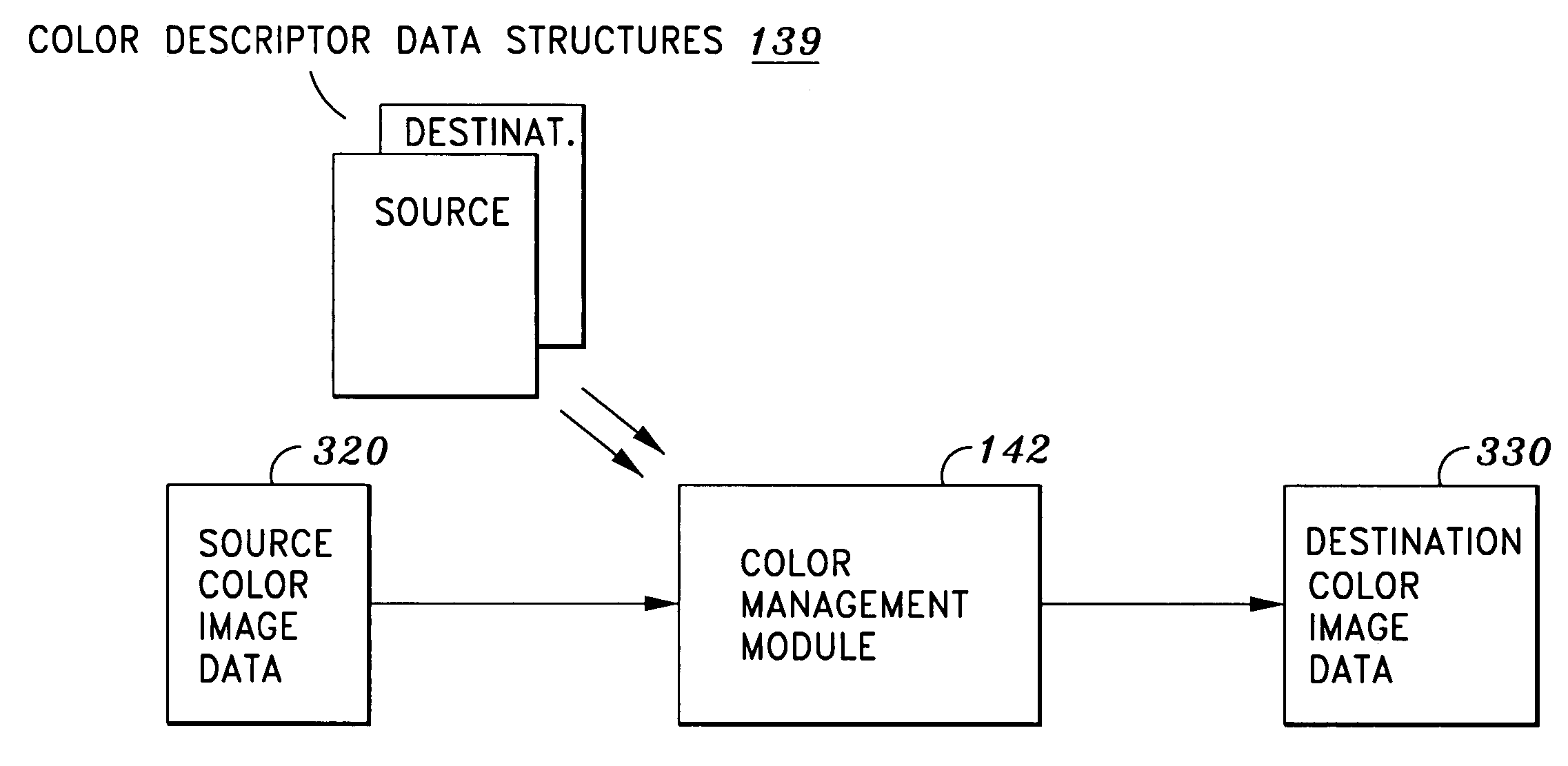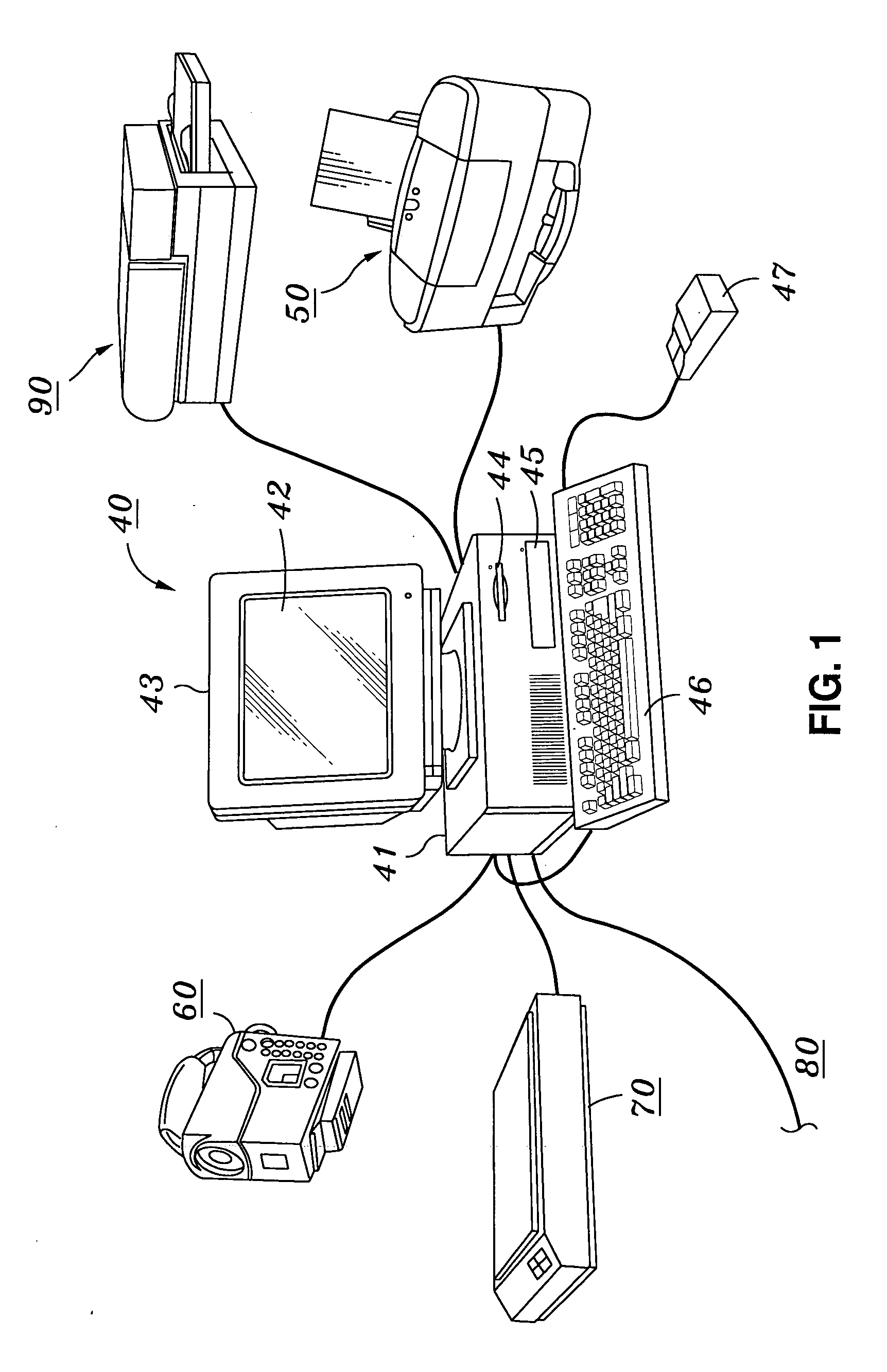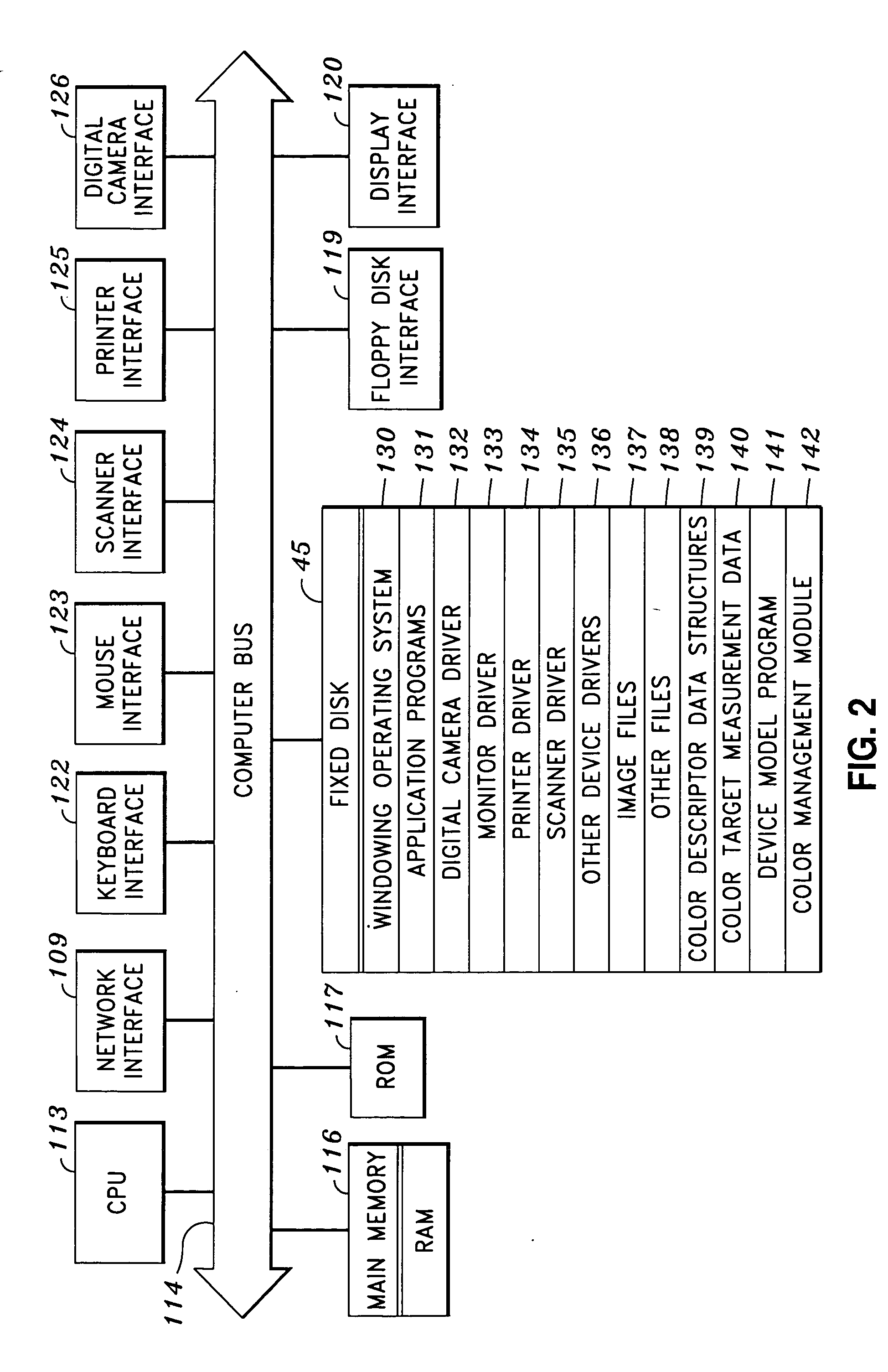Gamut mapping between multiple boundary regions
a color image data and boundary region technology, applied in the field of color image data gamut mapping, can solve the problems of inability to achieve optimal tonal mapping, difficult to accurately depict the true gamut of the device, and inability to accurately reproduce the color imag
- Summary
- Abstract
- Description
- Claims
- Application Information
AI Technical Summary
Benefits of technology
Problems solved by technology
Method used
Image
Examples
Embodiment Construction
[0041] The present invention provides a color descriptor data structure for a color device which contains a reference boundary descriptor representing reference colors of the color device, a plausible boundary descriptor representing plausible colors of the color device which include a whitest-white color and a blackest-black color, and a neutral color descriptor representing neutral colors of the color device which extend in range from the whitest-white color to the blackest-black color. According to the present invention, the color descriptor data structure can be used to appropriately gamut map an unrendered image, such as a photographic or video image, to an output medium on an output device, such as a printer, so that reproduction of the range of colors from the whitest-white to the blackest-black on the output medium is made possible.
[0042] Turning to FIG. 1, a computing environment is shown in which the present invention may be implemented. FIG. 1 depicts a representative co...
PUM
 Login to View More
Login to View More Abstract
Description
Claims
Application Information
 Login to View More
Login to View More - R&D
- Intellectual Property
- Life Sciences
- Materials
- Tech Scout
- Unparalleled Data Quality
- Higher Quality Content
- 60% Fewer Hallucinations
Browse by: Latest US Patents, China's latest patents, Technical Efficacy Thesaurus, Application Domain, Technology Topic, Popular Technical Reports.
© 2025 PatSnap. All rights reserved.Legal|Privacy policy|Modern Slavery Act Transparency Statement|Sitemap|About US| Contact US: help@patsnap.com



